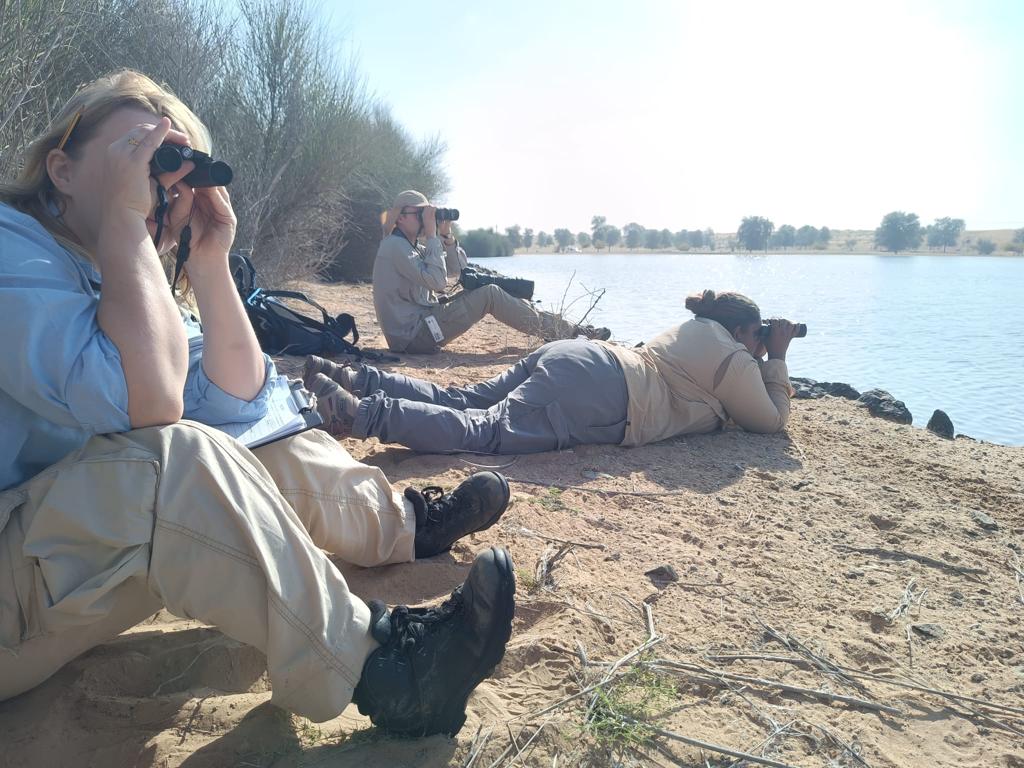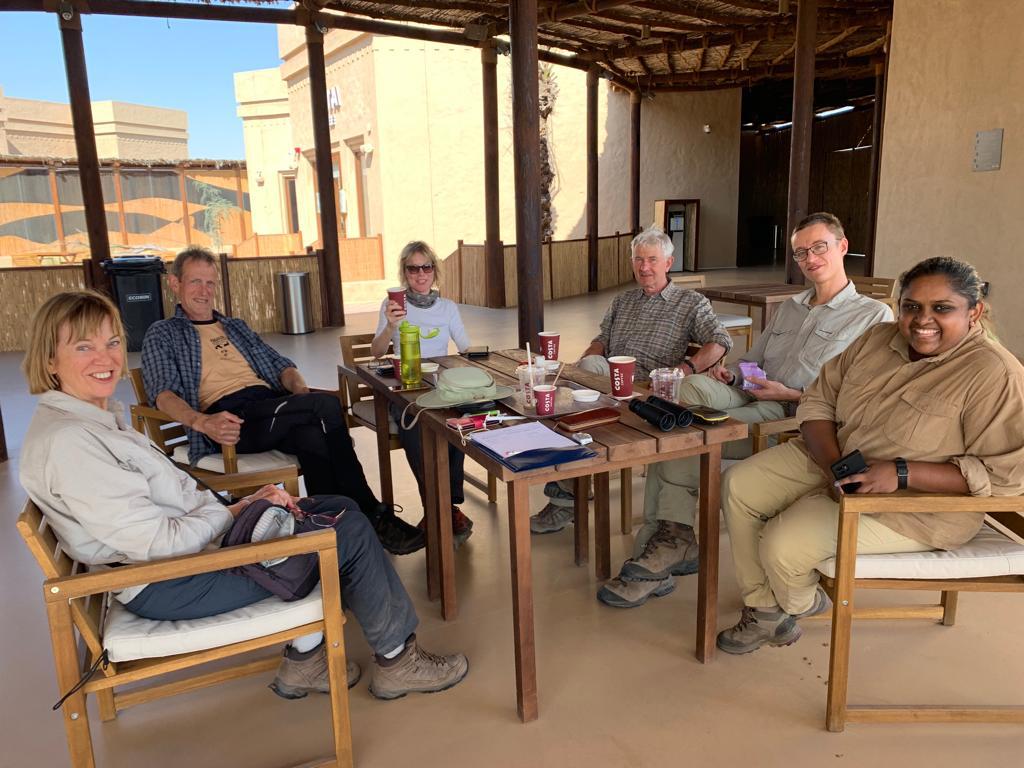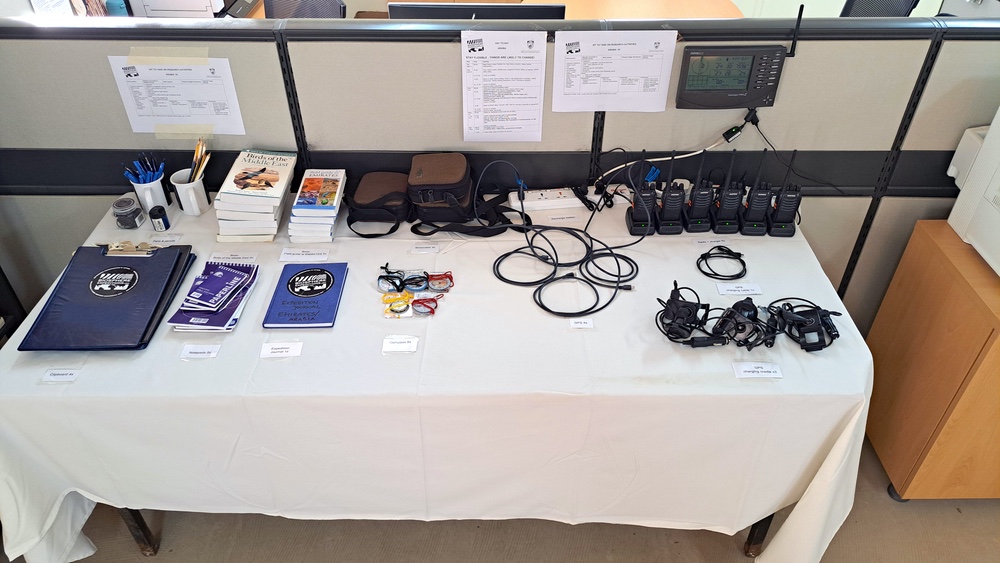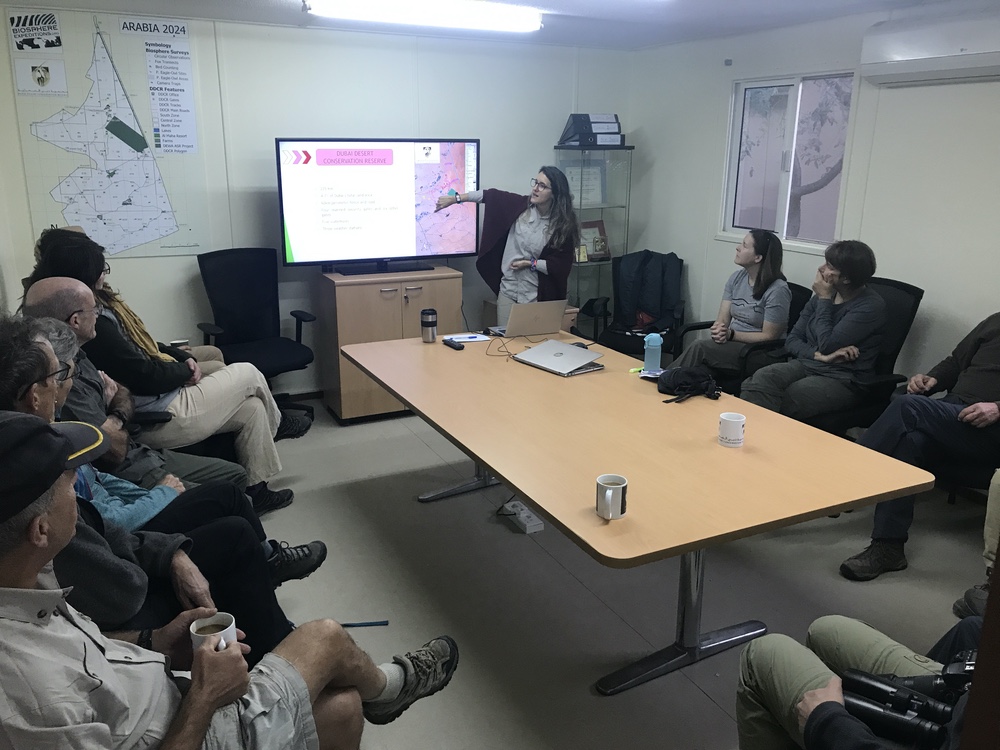Update from our wildlife conservation volunteering holiday in Dubai (UAE) working on oryx, wildcat and desert species
On the very last day of this year’s Arabia expedition group 2 discovered
a pharaoh eagle owl nest with two fluffy chicks in it. The nest was
well hidden in a ghaf tree with one parent always on watch. This
discovery was a direct result of our surveys, which led the scientists
to believe there was an active nest site somewhere around the west ghaf
grove. Further tips and investigations finally led us to the nest.
Science is often like a puzzle: Putting together tiny pieces to paint a
picture. Great team work, everyone!
Group 2 also completed the DDCR’s annual circular observations project by
surveying the remaining quadrats. Once again, two teams completed this
inventory by surveying 62 quadrats from a central point by walking many
kilometres up and down dunes enduring heat and wind. Well done, all of
you! By doing that you have done, you have created yet another piece of
the puzzle that will assist in the effective management of the DDCR.
Overall results from both groups include recordings of about 70 different
species inside the DDCR. Eighteen new pharaoh eagle owl nesting sites
were found, all of which will be monitored for activity. On the bird
census the teams recorded more than 45 different species including a
first record of a long-eared owl.
Thank you everyone for joining us in the desert and for putting your time,
money and efforts into this flagship conservation project. I hope you
enjoyed it as much as we did.
Malika & the DDCR team


















































































